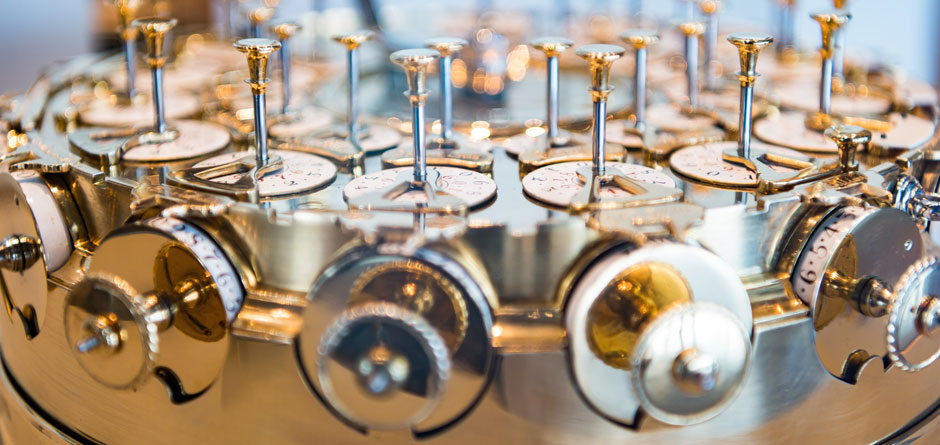The mechanization of information technology
In the 19th century, office technology in the widest sense of the term and communications technology made up what we now call information technology. The age of rapid communication began with the introduction of electromechanical telegraphs shortly before the middle of the 19th century. Initial steps to mechanize office work had been taken in the 1850s. From the 1880s, more and more mechanical machines were to be found in offices. They were used to handle tasks which had previously been done manually or by means of mental arithmetic, and had therefore been time-consuming and tiring.
Office machines
The economic prerequisite for this trend was growth in population, production of goods and international trade. This brought with it a great increase in correspondence, as well as in monitoring, administration and accounting activities in factories and trading companies. Government bodies were interested in keeping track of economic and social processes and, in particular, in analysing them statistically. This gave rise to a market for office machines, but this market only developed slowly in the beginning.
Technical prerequisites for small-scale series production of calculating machines and typewriters were improvements in design and high-precision manufacturing skills. The calculating machines that had been designed in the 17th and 18th centuries could not withstand long hours of operation without malfunctioning as a result of their complicated structure and lack of precision in manufacturing at the time. The technological and organizational requirements for industrial mass production of office machines in the last quarter of the 19th century had been established in the areas of handgun and sewing machine production.
Automatic data processing
Mechanization of office work began with the Thomas Arithmometer, which was produced on a small scale in France from the 1850s. Until the 1870s, it remained the only series-produced calculating machine in the world. Further - and now sweeping - mechanization of office work came from the USA in the 1880s, where first type-writers and cash registers became very popular, followed by calculating machines. The age of automatic data processing began with Herman Hollerith's punched card systems, which were first used to analyse the USA census in 1890. Now it was possible to collect previously inconceivable amounts of data, and to process these data at an acceptable level of effort and cost.
Mechanization of office work in Germany
The first accounting machines appeared on the market in about 1900 - also in the USA. They combined writing and arithmetic. In Germany, mechanization of office work emerged about two decades later than in the USA. From 1900, the makers of office machines, especially in the USA, underwent a tremendous period of growth. Within a few decades they increased their sales by more than hundredfold. The age of office machines had commenced.
Invention of the telephone
The electrical telegraph had managed to conquer distance. Once a transatlantic telegraph cable had at long last successfully been laid in 1866, an international market developed for certain products. Although it was originally invented in Germany, the telephone began its triumphal march in America. It was an instrument that allowed direct communication but initially only within towns. At the beginning, connections were established manually but this process was automated from 1892. This invention also originated in the USA. However, it took many decades for automatic exchanges to replace manual switching owing to the tremendous investments that were required.
Greater efficiency - increased monotony
Despite often entering the market relatively late, German companies achieved worldwide recognition and success in telecommunications and office machines thanks to the very high quality of their products and their willingness to cater to customers' special needs.
Mechanization brought with it division of labour in the office. This led to greater efficiency but also increased monotony. Monotonous tasks requiring less qualified skills, such as typing, telephone switching, punching and evaluating cards etc., were generally assigned to women who had gained access to office professions along with the process of mechanization and were generally paid less.
